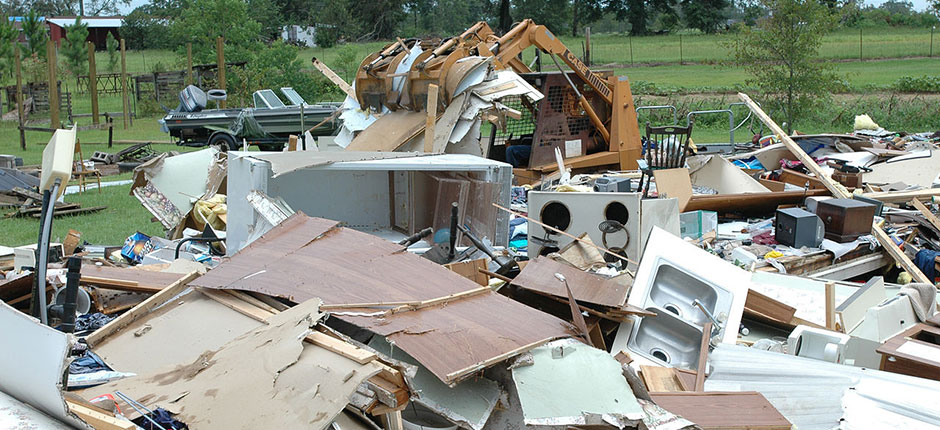

We’ve seen a rise in the number of natural and man-made disasters over the last few years. The 2017 hurricane season alone resulted in $200 billion worth of damage from June to November in the U.S., the most expensive hurricane season on record. From the devastating Camp and Carr wildfires in California to active shooters and Hurricanes Florence and Michael wreaking havoc on the southeastern U.S., medical facilities face a number of threats and knowing how to prepare can make all the difference in the world.
Healthcare facilities play a key role in the disaster relief effort by helping those affected access urgent medical services, while ensuring the safety of patients, staff, and residents. Disasters happen suddenly, leaving staff members little time to prepare. That’s why every medical facility needs to have an emergency preparedness plan in place, so staff members know exactly what to do in the event of a disaster. Use this guide to make sure your facility is prepared, not scared.
Types of Disasters
Your healthcare facility may face a variety of threats, but these threats vary based on the location of your facility and the types of services it provides. Creating an emergency preparedness plan depends on the types of threats your facility may encounter, so it’s important to be aware of all relevant, potential hazards ahead of time.
Weather-related disasters include earthquakes, tornadoes, hurricanes, floods, extreme heat and other forms of extreme weather. You can find more information on weather-related disasters on the Center for Disease Control and Prevention (CDC) website.
Terrorism includes all man-made and nonweather-related threats, such as active shooters, domestic terrorism, and those resulting from biological or chemical agents. Bioterrorism typically occurs when a patient that’s been exposed to a biological or chemical agent arrives at the healthcare facility. If the agent is unknown, diagnosing their symptoms may be difficult during this time. In order to treat these patients, providers must first identify the agent in question.
During these “unknown exposures”, the public health department will work with your facility to diagnose exposed patients and the scope of the threat. The health department will also help your facility initiate the decontamination process. The CDC provides specific information on various biological agents and diseases to help your facility prepare for the worst.
How to Prepare:
1. Facility Risk Assessment
The first step in creating an emergency preparedness plan is to identify the threats your facility may face. The initial risk assessment should be a multidisciplinary process with representatives from every department.
The Joint Commission requires member hospitals to complete an annual hazard vulnerability analysis (HVA), which provides a foundation for emergency planning efforts. This process includes assessing the probability of each type of event, the risk it would pose, and the organization’s current level of preparedness.
This HVA should also include local resources that may be affected or called upon for assistance in the event of a disaster, such as schools, churches, public transportation, news media, telephone and communication systems, nonprofits and volunteer groups, restaurants, and food suppliers.
The federal government offers a variety of tools to help your facility prepare for, and perform, a facility risk assessment, including the CDC’s Healthcare Preparedness Activity, the CDC Public Health Law Program: Emergency Preparedness, and the Response and Recovery Resources Compendium from the Department of Health and Human Services (HHS).
Once these threats have been identified, you can start creating an emergency preparedness plan for your facility, including the four basic components of disaster preparedness: mitigation, preparedness, response, and recovery.
2. Staff Training
All staff members should receive training on how they should respond in the event of a disaster. Facilities can use online and in-person emergency training courses to help staff members prepare for such an incident. This may include securing the health and safety of patients, contacting the local health department, reaching out for assistance, or coordinating with local officials.
Use the following resources to help your staff members prepare for a disaster: FEMA Center for Domestic Preparedness Resident Training: Healthcare, CDC-Sponsored Preparedness and Emergency Response Learning Centers, and the CDC Learning Connection/Emergency Management.
It’s also important to establish a chain of command in the event of a disaster. The situation can easily descend into chaos if patients and staff aren’t sure who’s in charge or to whom they should report. Everyone on your team should have a clear understanding of the disaster management structure, their individually assigned responsibilities, all reporting channels, and a common nomenclature to help unify the facility with other emergency responders.
3. Evacuation Procedures
If the threat reaches the level of evacuation, all staff members should know how to respond in the moment, including moving patients and colleagues to safety, coordinating with facility and outside officials, and securing food, water, and medicine for those affected.
Use the California Hospital Association Sample Hospital Evacuation Plan Checklist to learn more about implementing evacuation procedures.
Your facility should regularly update your emergency preparedness plan, as threats and response protocols may change over time. Keep your staff members, patients, and the local community safe during a disaster with these emergency preparedness resources.
When we discuss students, we always mention their qualities. Those qualities show what they are…
If you or someone you know is juggling mental health issues alongside substance abuse, understanding…
For the last couple of weeks, the Israel-Hamas conflict has taken over the news cycle.…
Our eyes are invaluable, serving as our windows to the world. The ability to see…
Undoubtedly, one of the most demanding and challenging professions is nursing. Nurses work long hours in…
Echocardiography, or echo for short, is a key diagnostic test used by cardiologists to assess…